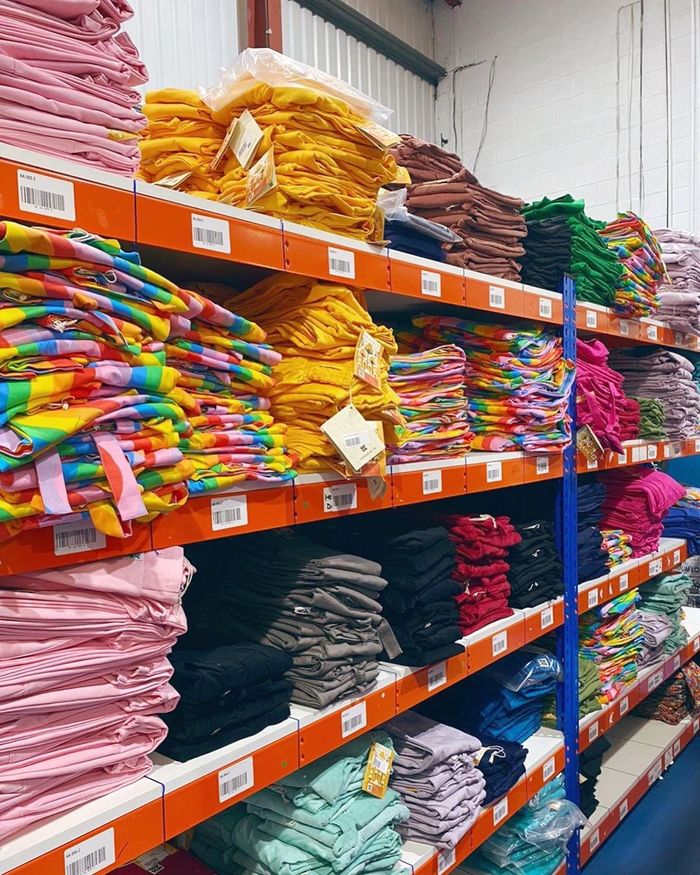It’s okay to have a seasonless summer
Fashion Editor Holly Sewell argues the case for the end of seasonality, stressing the importance of freedom and individuality in the way we are allowed to dress throughout the year
Content note: This article contains discussion of body image and disordered eating
It’s hot girl summer, baby. Whack on some booty shorts, a bikini or a barely-there crop top because the weather is sizzling — and so should you be.
A question I always hear thrown around during this time of year is: “Why are you wearing *insert reasonable item of clothing*? Aren’t you boiling?” Of course this can come from a place of concern, but its weight is easily underestimated. Deciding what to wear when the sun comes out brings with it a plethora of identity and body image issues for many of us. Having been bred to believe that certain types of body and clothing choices are unacceptable, the summer heat asks us whether we’d rather suffer physically (in the form of unbearable sweating), or mentally, through self-contempt and shame.
In 1965, Mary Quant opened her London boutique Bazaar. She is the designer most commonly credited as having brought the miniskirt into mainstream fashion, despite famously saying “It wasn’t me or Courrèges [another miniskirt pioneer] who invented the miniskirt anyway — it was the girls in the street who did it”. It was a huge success, and was quickly adopted by the iconic ’60s poster girl, Twiggy. As much as these new, revealing hemlines were a source of empowerment for some women, there was a caveat — unachievable beauty standards. According to the New York Times, in the ’60s, the average fashion model was 15 pounds lighter than the average woman. In the ’90s, the average fashion model was 35 pounds lighter and four inches taller than the average woman.
This sartorial rigidity has been undeniably damaging. Hospital admissions for eating disorders are on the rise, with an increase of a third in the last decade — and the impact of the ’60s and ’90s supermodels is clear. Even outside of this statistic, body dysmorphia is very real for many young people who never come forward about it. Wearing a long sleeve, a turtleneck or a pair of jeans during the summer, rather than opting for something smaller, shorter or tighter can be the difference between an average day and a mental breakdown.
“It’s time to start questioning the role seasonality has to play in fashion”
There’s a whole host of reasons why someone might be more comfortable covering up, even during the peak of a heatwave. It’s not just weight and height that have been standardised by the fashion industry: body hair, scarring, skin conditions, religion, financial barriers and just general fashion sense may all contribute to the reasons someone makes a particular outfit choice. Yet we continue to attack people for the way that they choose to dress during the summer months. It’s framed as a question of empowerment; by pitting those of us who like to show our skin against those who don’t, reclamation of the body is entirely misunderstood. The discourse around this is deafeningly substanceless, and usually fails to spot the simple answer: empowerment is dressing how you like, when you like. People are broad and diverse, and there is no one-size-fits-all way to be strong.
Showing skin can be a fantastic way to feel beautiful, but not everyone should be expected to partake in traditional summer dressing. It’s time to start questioning the role seasonality has to play in fashion. The climate crisis becomes more urgent by the day — not only does this affect the weather and the need for certain clothes to accompany the seasons, it also require a change in the way we make purchase decisions. To be able to adapt your clothes to work year-round is a blessing, both environmentally and financially. Hot girl summer is upon us, it’s true, but hotness in this context means a huge variety of things, and should be more to do with comfort and authenticity than anything else.
 News / Clare Hall spent over £500k opposing busway 24 December 2025
News / Clare Hall spent over £500k opposing busway 24 December 2025 Comment / The ‘class’ of Cambridge24 December 2025
Comment / The ‘class’ of Cambridge24 December 2025 News / Caius mourns its tree-mendous loss23 December 2025
News / Caius mourns its tree-mendous loss23 December 2025 Comment / League tables do more harm than good26 December 2025
Comment / League tables do more harm than good26 December 2025 News / Girton JCR publishes open letter expressing solidarity with Palestine25 December 2025
News / Girton JCR publishes open letter expressing solidarity with Palestine25 December 2025









